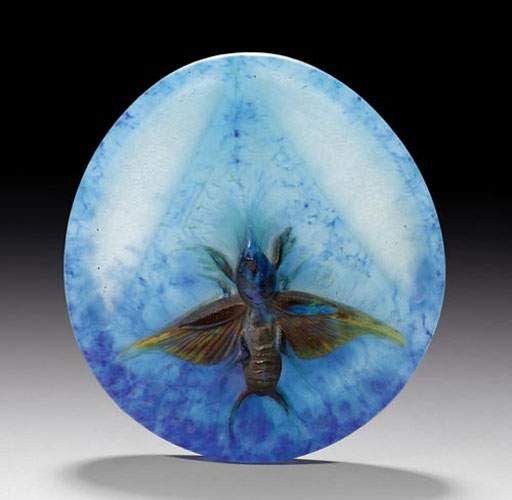 Valuation of a neay pair of wrought iron consoles in our next auction
Valuation of a neay pair of wrought iron consoles in our next auctionLe Floc'h auction house in Saint-Cloud, in collaboration with our experts specialized in free valuation and free appraisal will auction a near pair of French 20th century wrought iron consoles, Sunday 24th of November in Saint-Cloud.










Our teams in London and Paris are available to meet your needs whether you want to buy, sell or know the value of your works of art.
News releases
Almaric Walter and the technique of pate de verre.
Column Ceramic and glass, Appraisal and valuation

In the early twentieth century, the master glassmaker Almaric Walter (1870-1959) rediscovers the ancient technique of pate de verre.
This artist is trained in Sevres before starting his own business. In 1905, he joined the famous crystal Daum in Nancy and transmits its knowledge of the pate de verre. He creates objects such as small glass sculptures, paperweights or lamps in the Art Nouveau style.
Henri Bergé, Daum glassmaker provides him with a large number of models that initiate his own production. His career reached its apogee in the 1920s, marked by excitement around new objects in pate de verre.
This technique known and used during Antiquity allows creating small objects in the glass and round. The pate de verre is poured and molded cold on the principle of the technique of lost wax casting, and then vitrified by firing.
The glass master sets cullet (leftover looted glass) in a mold in fireclay and fired all in the oven. The glass melts taking the shape of the mold.

After cooling, it is possible to insert metal oxides in powder form into the mold to create a colored effect. A second firing is necessary to melt the glass and the color together.
After cooling, gently breaks the mold to release the final object. One can also work a few details by cutting, grinding or polishing.

You can find many items of glass paste in specialized antique and auctions room. You can find number of small translucent objects by Almaric Walter at affordable prices. The paperweights representing the typical Art Nouveau nude female or those representing frogs are particularly sought after, they cost from £600 to £800. Large cups are sought after, if it has an insect in molten glass prices are higher: between £2000 and £4000.
Almaric Walter remains an affordable artist to discover for all amateur and collector of glassware or Art Nouveau.
Bérénice Cugnière


 +33 6 95 34 93 78
+33 6 95 34 93 78

